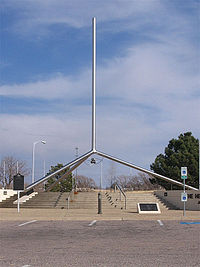Wikijunior:The Elements/Helium


What does it look, feel, taste, or smell like?[edit | edit source]

Helium is seen on earth as a colorless and odorless gas. It is the clearest element, and even in a liquid state (which can only be achieved by either applying great pressure or extreme cold) it is almost completely transparent. However, in a plasma state (see below,) it emits a pinkish glow.


How was it discovered?[edit | edit source]
Helium was discovered in the Sun in 1868 by an astronomer, Sir Norman Lockyer. He was using a technique (then new) called spectrography, which breaks light into its separate colors. Each element produces a different spectral pattern of bright lines. Lockyer noticed a line in sunlight that didn't match any known element and realized it belonged to a new element not found on Earth.
About 27 years later, in 1895, Sir William Ramsay discovered helium on Earth in a uranium mineral, cleveite. It was discovered independently about the same time by P.T. Cleve and Nils Langlet.
Where did its name come from?[edit | edit source]
Helium gets its name from Helios, the Greek god of the sun.
Did You Know?
- Helium is the second most common element in the universe.
- Helium is a noble gas, so it doesn't react very easily.
- Helium was used to learn that the structure of the atom had a dense nucleus and an electron cloud.
- Even at absolute zero, helium is still a liquid. It can only be solidified by applying extreme pressure to liquid helium.
- Near absolute zero, liquid helium will crawl along any surface; this is called superfluidity. Superfluid helium has zero viscosity (thickness.)
Where is it found?[edit | edit source]
Helium is found very commonly in the universe, but not very common on Earth. Today, most helium comes from Texas and Kansas in the United States. It is extracted along with natural gas from wells drilled into the ground.

What are its uses?[edit | edit source]
Helium is used to inflate balloons and blimps because it is the second lightest element (after Hydrogen), but doesn't burn like Hydrogen can.
Helium is often used (along with oxygen and sometimes nitrogen) in breathing gas for divers that go very deep, where high pressure is needed. (Normal air at this pressure causes nitrogen narcosis, a state similar to being drunk.)
Liquid helium is the coldest liquid known (even at absolute zero, it remains a liquid) and is often used in cryogenic applications such as Magnetic Resonance Imaging (MRI), where the extreme cold makes it possible to create extreme magnetic fields.
Is it dangerous?[edit | edit source]
Though helium is nontoxic, if you breathe in too much helium you can suffocate through lack of oxygen.